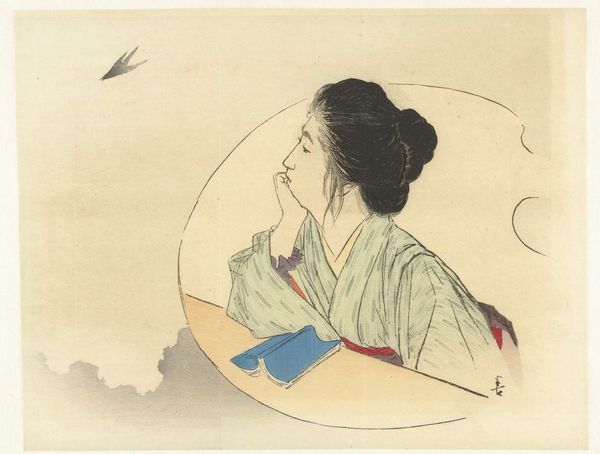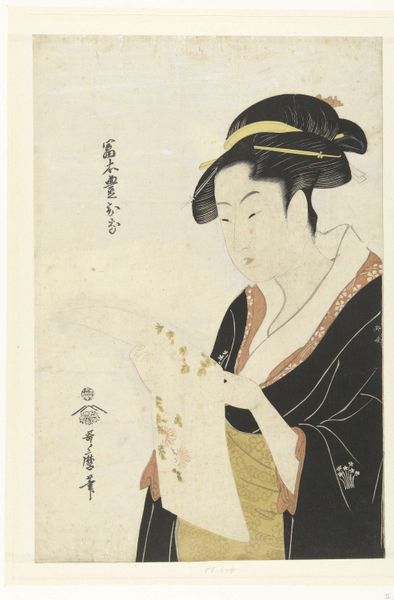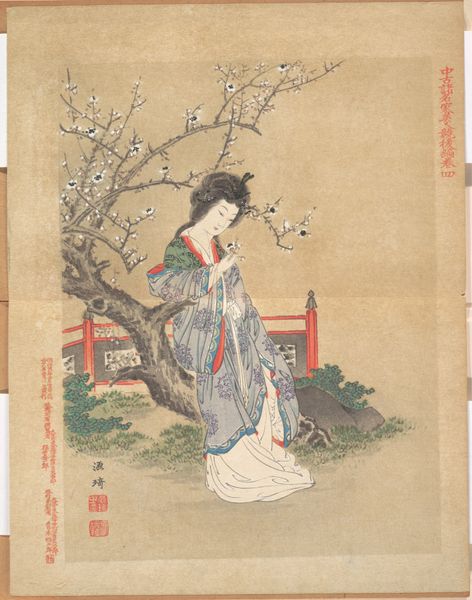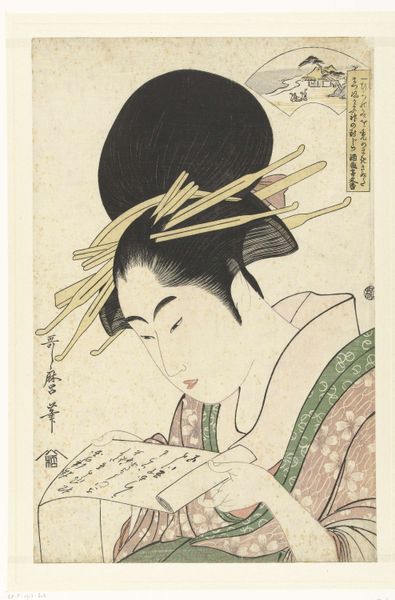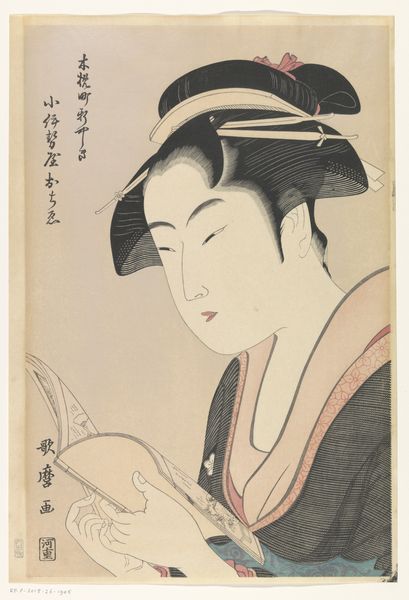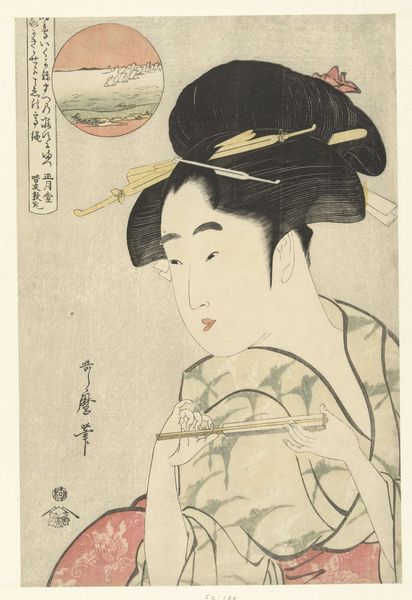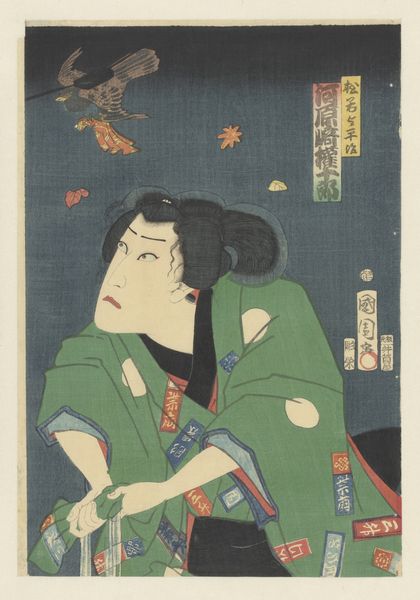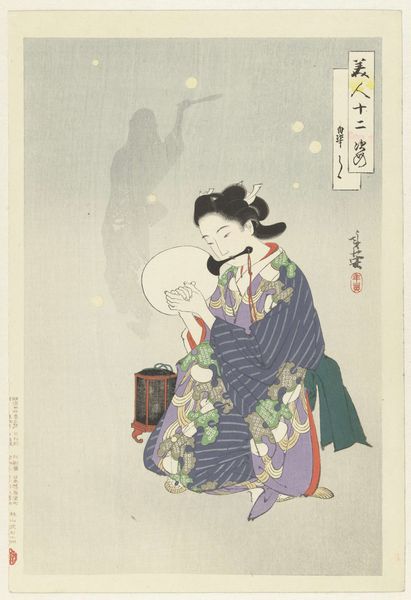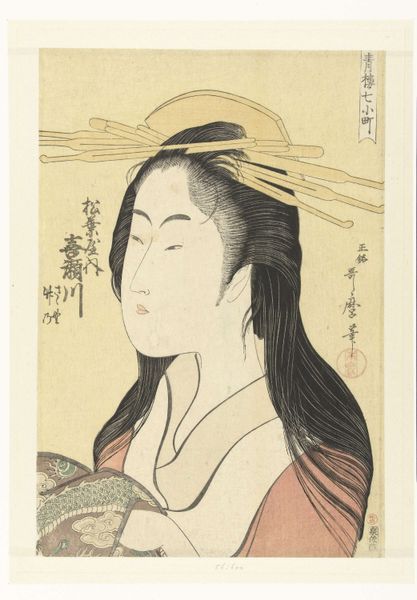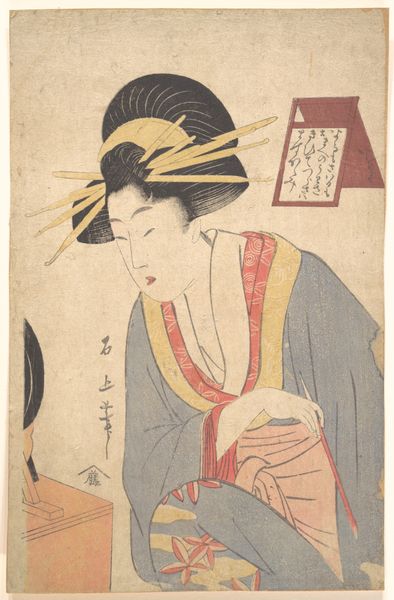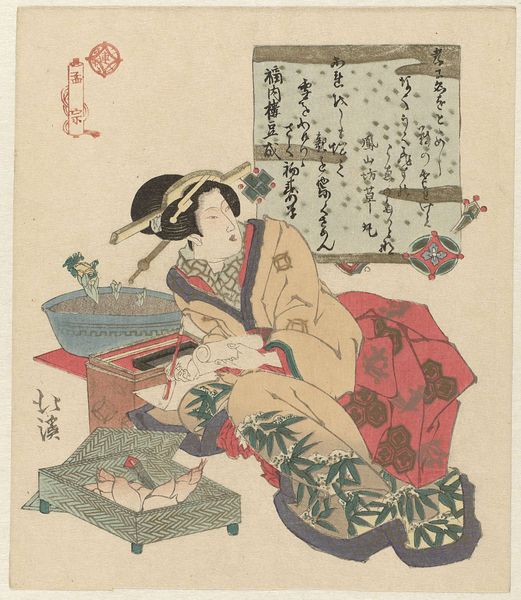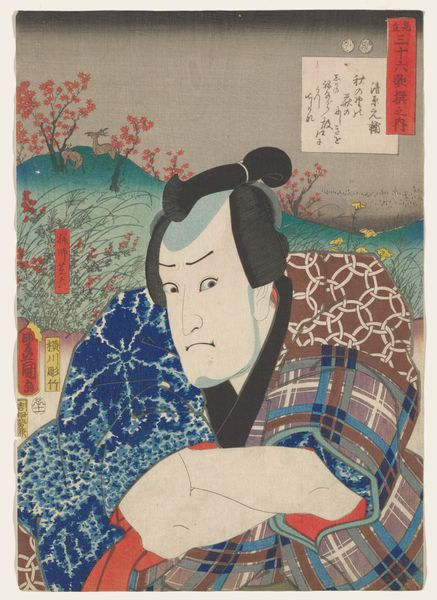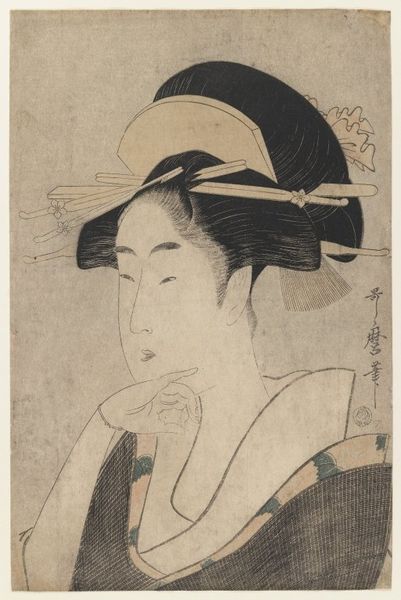
Dimensions: height 221 mm, width 304 mm
Copyright: Rijks Museum: Open Domain
Editor: So this is *Lezende vrouw met bloeiende tak* by Kajita Hanko, made sometime between 1900 and 1917. It’s a watercolor print, a very gentle portrait of a woman reading, framed by a blossoming branch. The colours are very subdued and calming, the style appears quite classic and refined... what can you tell me about it? Curator: This piece belongs to the *ukiyo-e* tradition, which flourished from the 17th through 19th centuries. But considering the date, we are seeing the art as it moves into the 20th century. I notice the very subtle use of colour in depicting the woman's robe, in particular. Consider how the patronage and creation of *ukiyo-e* shifted as Japan opened to the West. Where earlier it might have represented popular culture, how might that change? Editor: I suppose it's interesting to think how it’s moving away from ‘popular culture’. Do you mean as Western art started gaining traction, ukiyo-e perhaps tried to define itself differently, moving toward becoming...high art? Curator: Exactly. Look at how this print engages with ideas of the feminine ideal but in relation to imported artistic values, or new forms of national cultural pride, even. Would you say it's targeted to domestic or foreign audiences? And what tells you that? Editor: Hmmm. Good question! It could be aimed at tourists. It almost feels like a response to Western interests, presenting a refined image of Japanese womanhood. The blossoming branch might speak to beauty and ephemerality, aligning with orientalist expectations. Curator: Precisely! And how the artwork circulates shapes its meaning as much as its original intention. The Rijksmuseum acquiring and displaying it contributes to this layered historical reception, creating meaning now in its role educating and inspiring current visitors! Editor: That’s such a helpful reframing of what ukiyo-e is usually known for – it makes me look at it in a completely new way. Thanks. Curator: My pleasure! Examining this cultural exchange gives us insight not just into the art itself, but the dynamic relationship between East and West, even now!
Comments
No comments
Be the first to comment and join the conversation on the ultimate creative platform.
